Pros: Wilderness trim excels off-road; great visibility; tons of space inside
Cons: Dreary powertrain; sloppy handling; dated tech; upper trim levels less luxurious than rivals
OK, so let’s get this out of the way: If you buy a 2024 Subaru Forester, you’ll be foregoing a multitude of updates and upgrades coming for the 2025 model year. The good news is, it’s really not that different. Despite the updated looks, upgraded tech features and revised trim levels, the next Forester is mechanically similar to the one sold for 2024. In short, you’re not missing that much, and we don't know when the next-generation Wilderness may arrive. It may be another model year.
Now that that’s out of the way, let’s talk about how the Forester stands in the greater compact SUV segment. Its standard all-wheel drive, class-leading ground clearance, ample cargo capacity, sturdy roof rails and a relatively simple interior all help the Forester’s cause. The aforementioned Forester Wilderness delivers even more of the above for folks wanting greater capability than the standard model. Indeed, those would be the folks for whom the Forester will have its greatest appeal. There’s no surprise that it’s so popular in the Pacific Northwest, Colorado and Northeast.
In most other respects, though, and for less specific buyers, the 2024 Forester falls short. Its design and styling won’t turn any heads, and the powertrain, consisting of a naturally aspirated boxer four-cylinder and continuously variable transmission, is merely acceptable for the class. There’s also no hybrid available. The tech Subaru has on offer feels dated and slow, and while the infotainment system itself is easy to use, we can’t say the same for the busy cluster and funky screen above the infotainment (this is one area where the 2025 Forester improves upon, but as we’ve sampled its upgraded system in other Subarus, we know it’ll still fall well short of the segment’s best. Its ride is comfortable enough, but a noisy cabin and lackluster handling won’t impress anybody. For all these reasons, the Forester finds itself toward the middle and rear of the pack when compared to standouts like the Honda CR-V, Kia Sportage, Hyundai Tucson, Toyota RAV4, Nissan Rogue and Mazda CX-50.
Interior & Technology | Passenger & Cargo Space | Performance & Fuel Economy
What it's like to drive | Pricing & Trim Levels | Crash Ratings & Safety Features
What's new for 2024?
The Forester carries over unchanged for the 2024 model year, but if you think you saw something about a new Forester coming, you’re not wrong. The Forester will be heavily refreshed for next model year, and you can read all about it in our 2025 Subaru Forester Preview.
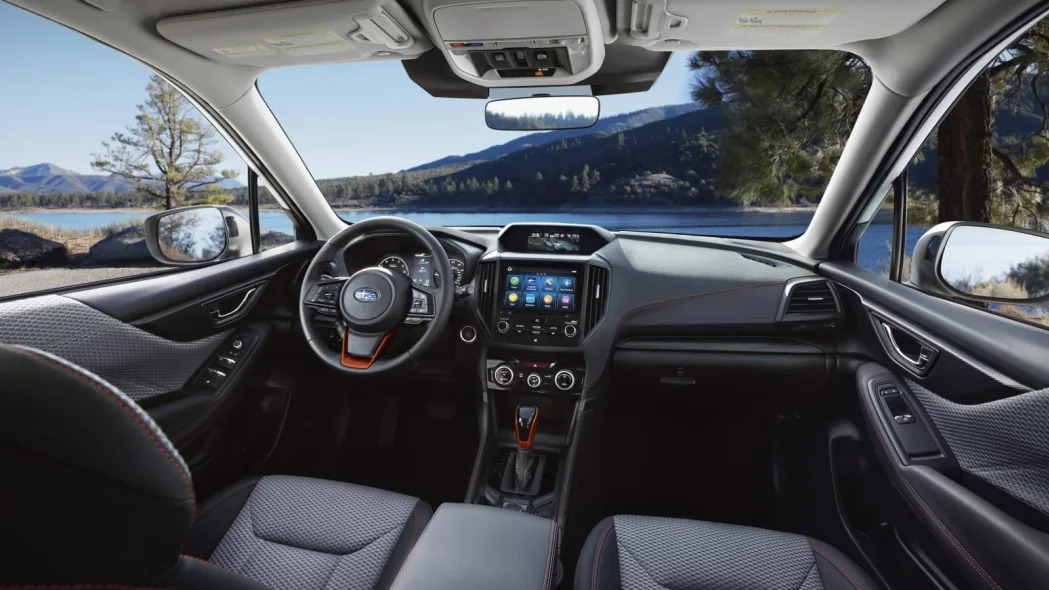
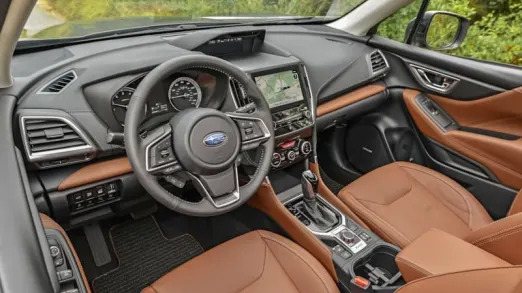
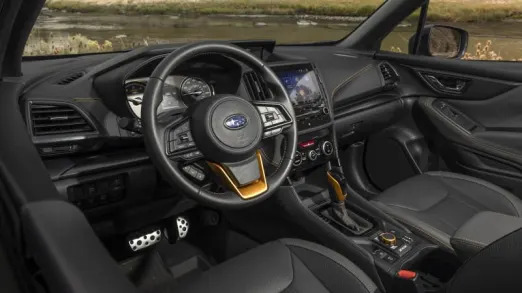
What are the Forester interior and in-car technology like?
The Forester's interior design is function-first, with a sensible control layout and visibility that rivals the Popemobile. The materials are of an acceptable quality, and driving for hours on rutted dirt roads proves it's all put together well. But don’t expect fake wood trim or fake leather applied to the dash and doors – the Forester isn't trying to be something it isn't. Instead, color is used to spruce things up, with orange in the Sport, copper in the Wilderness and camel in the ritzier Touring (all pictured above). For those whose wardrobe and gear could mostly be sourced from REI, a Forester should fit right in.
The in-car tech is similarly sensible and easy-to-use, although opting for the 8-inch touchscreen upgrade over the standard 6.5-inch unit is certainly helpful. The big icons are easily read and pressed, which is good when you're on a bumpy dirt road (or just on terrible pavement). We also appreciate that Subaru has maintained physical buttons and knobs for menu selection and controls that aren't well-suited to touchscreens. On the other hand, the combination of touchscreen, instrument panel display and the unique dash-top display can make it difficult to know where to see or control certain vehicle functions. Buttons on the steering wheel are also tasked with operating both the IP and dash-top display, which presents a steep learning curve for new buyers. Subaru has cleaned this all up in the Outback and Crosstrek by dropping the dash-top screen in favor of a much larger main screen, but that sadly won’t make it to the Forester until 2025. On the upside, the dash-top display is the perfect spot to show the forward camera feed in the Wilderness, which is a big help when negotiating tough terrain.

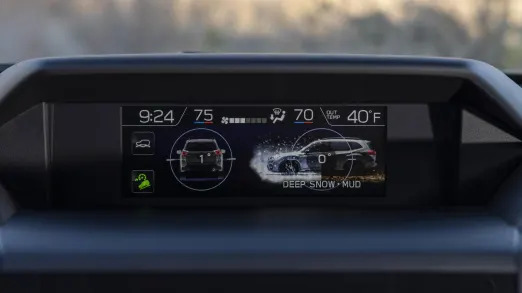
How big is the Forester?
The Forester has basically the same exterior dimensions as its main rivals, the Honda CR-V, Toyota RAV4, Hyundai Tucson and, to a lesser extent, Jeep Cherokee. Backseat space differs more between them, but they're all generously spacious and well within the realm of "family friendly." In fact, these are the most spacious compact SUVs. Still, the Forester stands out with its boxy side windows (visibility is exceptional even for back-seat occupants) and the ample recline of its seat back.
In terms of cargo space, the Forester's 28.9 cubic feet (or 26.9 with its jumbo sunroof) seemingly falls nearly 10 cubic feet short of the Kia Sportage, Hyundai Tucson, Toyota RAV4 and Honda CR-V. This is curious, however. Subaru originally published cargo capacity numbers of 35.4 cu. ft. and 33.0 cu. ft. (no sunroof) for this Forester generation. Those would be far more in keeping with what we saw when actually loading it up with luggage. Although still a bit short of the segment's big boys, it's actually closer to them than its current cargo capacity figures would indicate on paper.
It's also worth noting the Forester's class-leading ground clearance. At 8.7 inches, only the Jeep Cherokee Trailhawk, specifically, can match it, with the Toyota RAV4 TRD Off-Road and Adventure falling just a bit short at 8.6. Remember, this is the base Forester, not a special off-roading trim level like those of its rivals. The Forester's own special off-roading trim, the Wilderness, cranks things up to 9.2 inches and shaves off some bumper to further improve its approach angle. Though it still can't match the Trailhawk's approach and departure angles, it's better than everything else, including other Cherokees. The same can be said for the Forester's roof rails, which are capable of supporting more weight than everything in the segment – with the Wilderness again upping the ante even further.

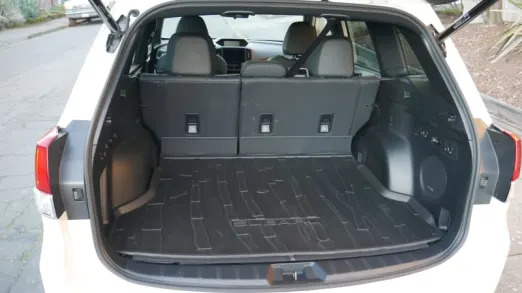
What are the Forester fuel economy and performance specs?
The Forester can only be had with a 2.5-liter boxer four-cylinder engine good for 182 horsepower and 176 pound-feet of torque, which is low for the segment. It is exclusively paired to all-wheel drive and a continuously variable transmission (CVT), which tries to simulate the gear shifts of a normal automatic. Its set ratios are altered in the Wilderness for sharper response and performance better suited to driving off-road.
Fuel economy is 26 miles per gallon city, 33 mpg highway and 29 mpg combined in all Foresters but the Wilderness. Its different transmission ratios, all-terrain tires and altered aerodynamics result in lower figures of 25 mpg city, 28 mpg highway and 26 mpg combined.
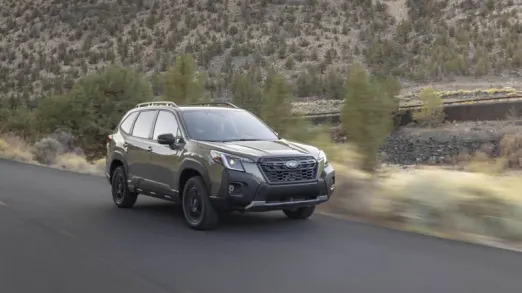
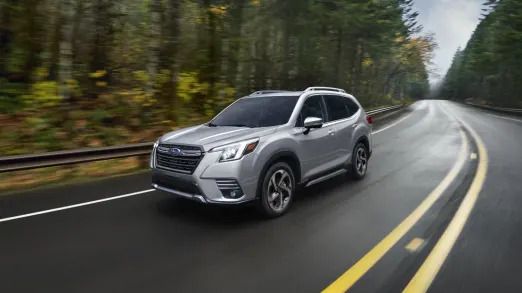
What's the Forester like to drive?
When on road, the Forester is fairly dull. The steering is numb and its turn-in off center is anything but crisp. The handling? Capable and stable, but if you're looking for responsive and engaging, look elsewhere. Acceleration is merely sufficient, and while enhanced by the boxer-four's characterful growl, it's still unpleasant when the CVT pins revs up high at full throttle. The standard CVT does slur together its "gear" ratios in a way that's less intrusive than the moo-like droning of older CVTs, but hardly what anyone would deem normal for an automatic.
Things improve off-road and on dirt roads, where having some steering slack is actually a good thing. When driving a Forester Wilderness with its grippier all-terrain tires, we were truly impressed with how adept it was at responding to our last-second steering corrections to avoid holes. And when we failed, the Wilderness' extra suspension travel and retuned dampers did a sensational job of cushioning the impact, and in general did a tremendous job sopping up bumps and ruts off the beaten path. For the type of off-roading its owners are likely to do, the Forester Wilderness is absolutely perfect for it. The regular Foresters (including the Touring pictured above) are obviously not at the same level in this regard, but are still better-suited than the Honda CR-Vs, Nissan Rogues or Mazda CX-5s of the world.
What other Subaru Forester reviews can I read?
2022 Subaru Forester Wilderness First Drive Review
The full scoop on the new Wilderness, including its myriad substantial updates and what it's like to drive on- and off-road.
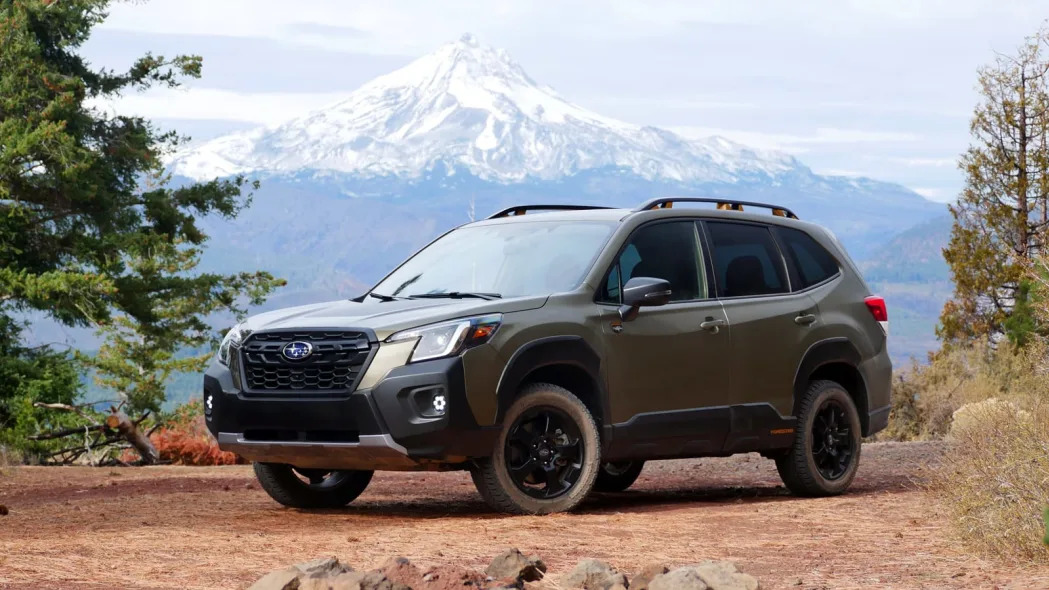
2019 Subaru Forester Long-Term Test
Although the Forester has been updated for '22, it belongs to the same generation as the car introduced for 2019 that we tested for an entire year. Our observations remain broadly the same.

Subaru Forester vs Honda CR-V Car Seat Test
We place a forward-only car seat in both the Honda CR-V and Subaru Forester to see which might be a better fit.

Subaru Forester vs Honda CR-V Cupholder Test
Admittedly, this is less helpful than the car seat test, but as we had two top competitors together and a lot of beverage containers, we figured, hey why not?
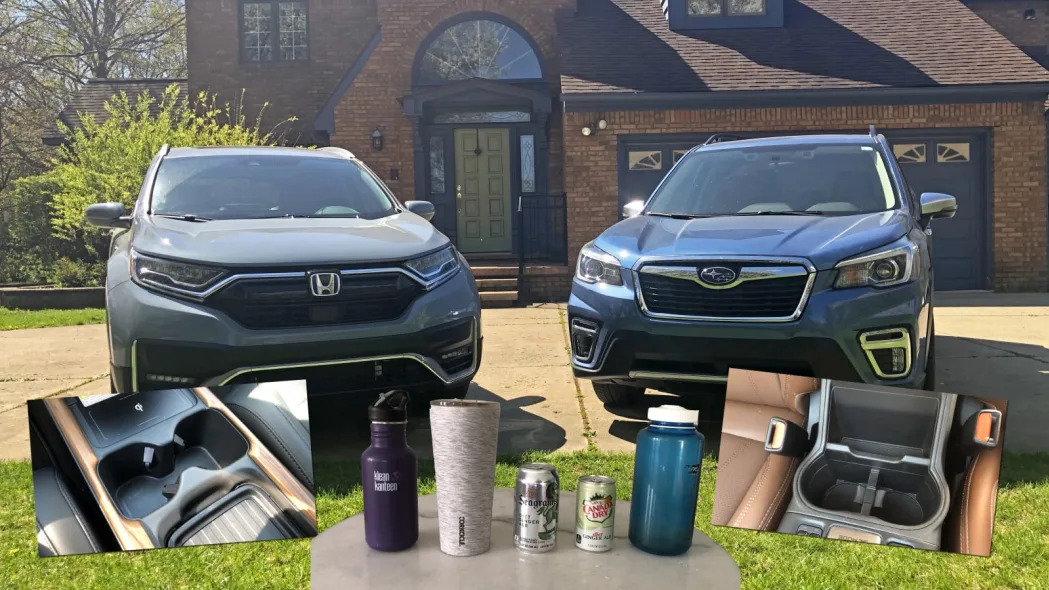
What is the 2024 Forester price?
Pricing starts at $28,190, including the $1,295 destination charge. It also includes all-wheel drive, which is standard on every Forester. Keep that in mind when comparing its pricing to those of competitors. There are six trim levels: Base, Premium, Sport, Wilderness, Limited and Touring.
The base Forester has steel wheels and goes without roof rails – they can be added as a package, but that gives you an idea that it's a bit more of a stripper than some other base trims. Still, it includes a 6.5-inch touchscreen, Apple CarPlay, Android Auto, SiriusXM, a CD player(!), two USB ports up front and the multitude of Subaru EyeSight driver assistance features described in the Safety section below.
The Premium is probably where most folks will start, as its power driver seat, heated front seats, tinted rear windows, leather-wrapped steering wheel, jumbo sunroof, LED foglights, alloy wheels and roof rails are tangible upgrades for a reasonable amount.
From there, things fork in multiple directions. The Sport and Wilderness add similar comfort and convenience equipment, but whereas the Sport gets unique orange accents and other special sporty styling cues, the Wilderness gets its own off-road-oriented style along with genuine off-road-oriented enhancements. The Limited goes a different way entirely, with bigger wheels, some fancier(ish) trim, leather upholstery and a few comfort/convenience items not available on the two special lifestyle trims. The range-topping Touring goes even further with fancier trim and luxury features such as dark-painted 18-inch wheels, power passenger seat, heated rear seats, Subaru's trick eye-tracking technology and gesture controls. We'd have to say, however, that the Forester is ultimately at its most distinctive and competitive in Sport and Wilderness forms.
All prices below include the $1,295 destination charge.
Base: $28,190
Premium: $31,390
Sport: $32,960
Wilderness: $36,015
Limited: $35,070
Touring: $38,490
What are the Forester safety ratings and driver assistance features?
Every Subaru Forester comes standard with forward collision warning, automatic emergency braking, lane-departure warning and lane-keeping assist, and adaptive cruise control with lane-centering steering assist. Blind-spot and rear cross-traffic warning, plus automatic emergency steering, are optional on the Premium and standard on all trims above. The Touring adds the aforementioned Subaru's Driver Focus system, which we've frankly didn't see as a particularly game-changing feature – at least yet.
In government crash testing, the Forester received a perfect five stars for overall, frontal and side crash protection. The Insurance Institute for Highway Safety gives the Forester a Top Safety Pick+ for its best-possible scores in most pertinent categories, but a new, more stringent side crash test introduced two years ago results in a second-best "Acceptable" rating. Additionally, an updated moderate overlap front crash test took a previous "Good" rating down to only "Moderate." That said, the IIHS still labels the Forester as a 2023 Top Safety Pick+ award winner — we'll see if there are any changes to that status once 2024 awards are handed out.
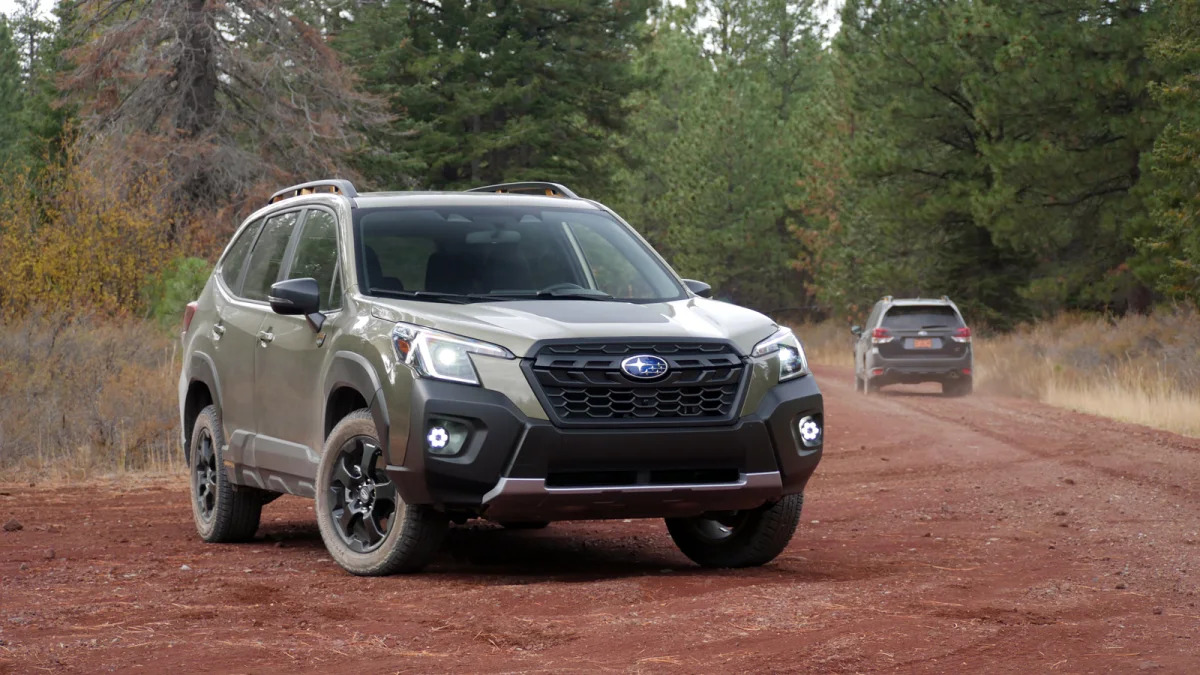








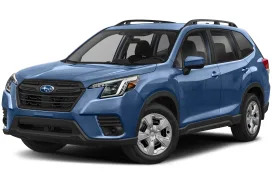
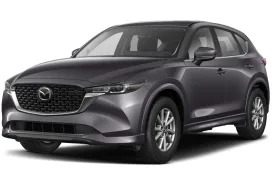
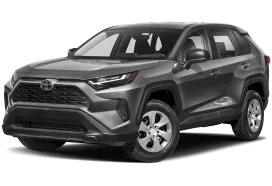

Sign in to post
Please sign in to leave a comment.
Continue